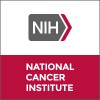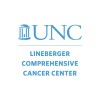
Dose Escalation Study to Evaluate an Experimental New Treatment (CALY-002) in Healthy Subjects and...
Eosinophilic EsophagitisCeliac DiseaseThis is a single and multiple ascending study to characterize the safety, PK, PD and clinical effect in healthy volunteers and participants with Celiac Disease and Eosinophilic Esophagitis.

GNR-084 Safety and Pharmacological Characteristics in Refractory or Relapse B-cell Precursor ALL...
B-precursor Acute Lymphoblastic LeukemiaALL1 moreIt is an open-label dose-escalating study in sequential cohorts to assess safety and pharmacokinetics of GNR-084.

Venetoclax With Obinutuzumab and Magrolimab (VENOM) in Relapsed and Refractory Indolent B-cell Malignancies...
Follicular LymphomaMarginal Zone Lymphoma3 moreBackground: B-cell lymphoma is a cancer of certain white blood cells (called lymphocytes). These cells are found in lymph nodes. The cancer can cause enlargement of the lymph nodes leading to pain and discomfort. Swollen lymph nodes can also press on nearby organs such as liver and kidneys which can affect normal functioning of the organs. Researchers think that a new combination of drugs may be able to help. Objective: To find out if it is safe to give the combination of Magrolimab, Obinutuzumab and Venetoclax to people with B-cell lymphomas. Eligibility: Adults age 18 and older with an indolent B-cell lymphoma whose disease has returned or progressed after other treatment. Indolent B-cell lymphoma for this protocol is defined as having either follicular lymphoma, mantle cell lymphoma, chronic lymphocytic leukemia/small lymphocytic lymphoma or marginal zone lymphoma. Design: Participants will be screened under a separate protocol. Participants will have 28-day 'cycles' of treatment. They will take Venetoclax by mouth daily. They will get Obinutuzumab and Magrolimab by intravenous (IV) infusion. Treatment will last for about 8 months. They may be able to have more cycles of treatment if their cancer is responding well. Participants will have physical exams, medical histories, and medicine reviews. Data about how they function in their daily activities will be obtained. They will have blood and urine tests. They may have bone marrow tests. Participants will have imaging scans. These will include computed tomography (CT) and/or magnetic resonance imaging (MRI) scans and positron emission tomography (PET) scans. Participants may give a cheek swab or saliva sample. They may give tumor tissue and bone marrow samples. These samples may be used for gene testing. Participants will have a follow-up visit about 30 days after treatment ends. Then they will have visits every 3 months for the first 2 years, every 6 months for the next 3 years, and then yearly after that.

Safety and Efficacy of Rituximab for Treatment of Multicentric Castleman Disease in Malawi
Multicentric Castleman DiseaseThe purpose of this study is to determine the safety and efficacy of first-line, risk-stratified Rituximab-based Multicentric Castleman Disease (MCD) treatment in Malawi in a single-arm, phase II clinical trial. This study also aims to compare the cost-effectiveness of first-line Rituximab treatment for MCD in Malawi to chemotherapy.

A Study to Evaluate the Efficacy and Safety of Fenebrutinib Compared With Teriflunomide in Relapsing...
Relapsing Multiple SclerosisA study to evaluate the efficacy and safety of fenebrutinib on disability progression and relapse rate in adult participants with RMS. Eligible participants will be randomized 1:1 to either fenebrutinib or teriflunomide. Open-Label Extension (OLE) phase is contingent on a positive benefit-risk result in the Primary Analysis of the study.

Bendamustine, Rituximab and Acalabrutinib in Waldenstrom's Macroglobulinemia
Waldenstrom MacroglobulinemiaThis is a multi-centre, open label, single-arm, phase II clinical trial in untreated patients with Waldenstrom's Macroglobulinemia. Symptomatic, previously untreated patients will receive SOC bendamustine and rituximab for 6 28-day cycles. Bendamustine will be given intravenously at 90 mg/m2 on days 1 and 2 of each cycle. Rituximab will be given on day 1 of each cycle (375 mg/m2 intravenously for the first cycle and 1400 mg subcutaneously OR 375 mg/m2 intravenously for subsequent cycles (as per institutional procedures)). Concomitantly, participants will receive 100 mg of the investigational product, Acalabrutinib, orally for 1 year (365 days) at 100 mg BID.

PD-1 Inhibitor or PD-1 Inhibitor Plus GVD for Relapsed/Refractory CHL
Classical Hodgkin LymphomaRefractory or Relapsed Classical Hodgkin LymphomaThis phase 2 trial studies the efficacy and safety of PD-1 inhibitor monotherapy or PD-1 inhibitor with GVD (Gemcitabine, Vinorelbine and Doxorubicin Liposome) regimen for relapsed or refractory classical Hodgkin lymphoma (CHL) patients who failed the first-line induction therapy.

Isatuximab in Patients With Monoclonal Gammopathy of Renal Significance
Monoclonal GammopathyThe purpose of this study is to see whether Isatuximab can help improve kidney function of participants with MGRS. Isatuximab is approved by the Food and Drug Administration (FDA) for the treatment of adult patients with multiple myeloma, but it is not approved by the FDA to treat MGRS. This means that the use of isatuximab in this study is considered 'investigational'.

Study to Evaluate the Efficacy, Safety and Tolerability of MAS825 in Patients With Monogenic IL-18...
NLRC4-GOFAIFEC (Autoinflammation With Infantile Enterocolitis)2 moreThis study is a Phase 2 trial designed to evaluate the clinical efficacy, safety, and tolerability of MAS825 in patients with NLRC4-GOF, XIAP deficiency, or CDC42 mutations.

A Study to Investigate the Use of Benralizumab in Patients With Bullous Pemphigoid.
Bullous PemphigoidThe purpose of this study is to investigate the use of benralizumab is effective in the treatment of patients symptomatic Bullous Pemphigoid (BP).
